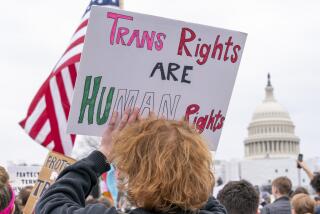Rush to Judgment as Justices Prepare for Summer Break : Cases involving abortion, school prayer and Prop. 13 are among those still to be decided in the next two weeks.
- Share via
WASHINGTON — It is rush to judgment time at the Supreme Court again.
Each year, in the final two weeks in June, the justices hand down decisions in dozens of cases that have been pending before them. Not until the last justice has signed off on the last opinion and the decision is announced does the court adjourn for the summer.
No one can say for certain when that final day will come. But the consensus in the $2 betting pool in the press room is that the court will wrap up its business on June 29.
Even the justices are not sure when they will finish their deliberations. In hard-fought cases, those in the majority and the dissenters can continue to trade memos and polish their opinions until all nine of them are satisfied.
Here are the key cases in which decisions are still expected this month:
* Abortion: Can the states regulate or even forbid abortion? The justices will rule on a Pennsylvania law that requires pregnant women to notify their husbands and wait 24 hours before obtaining an abortion. Planned Parenthood vs. Casey, 91-744, gives the court a chance to reconsider Roe vs. Wade. The case was argued on April 22, and it is expected to be one of the final rulings of the term.
* Hate speech: Does the First Amendment’s guarantee of free speech invalidate laws against cross burnings or other racist actions? The case of R. A. V. vs. St. Paul, 90-7675, poses the question of whether the court’s broad defense of flag burning as a type of symbolic speech also applies to cross burning. The ruling could affect so-called campus speech codes.
* School prayer: Can public high school officials invite a cleric to deliver a prayer for a graduation ceremony? The answer is likely to be “yes,” but more important, the case of Lee vs. Weisman, 90-1014, gives the court a chance to redefine the doctrine of separation of church and state.
* Cigarettes: Does the required federal warning label on cigarette packs shield tobacco companies from being sued for damages in state courts for failing to tell smokers of the true danger? A ruling in favor of a deceased smoker in Cipollone vs. Liggett Group, 90-1038, could open the tobacco industry to a flood of lawsuits.
* Proposition 13: Does California’s property taxing system unconstitutionally discriminate against a new homeowner who must pay far more than neighbors with similar property? A ruling striking down Prop. 13 could cause a fiscal and political earthquake in California. But during February arguments in Nordlinger vs. Hahn, 90-1912, the justices seemed to indicate a willingness to uphold the law.
* Juries: Does the Constitution forbid criminal defendants to exclude potential jurors based on race? In 1986, the justices said prosecutors cannot exclude jurors based on race. Now, they must decide whether to extend that principle to defendants. A ruling in the case of Georgia vs. McCollum, 91-372, could affect the retrial in the Rodney G. King beating case because it could limit the power of attorneys to shape the jury.
* Property rights: Does a state violate a property owner’s right when it decrees that he cannot build a home on his beachfront land? Property rights’ advocates hope the court will give owners the right to develop their own property. On the other hand, environmentalists fear a ruling in Lucas vs. South Carolina, 91-453, will hamper the government’s ability to protect wetlands, coastal zones and other sensitive areas.
* Airport soliciting: Can a public airport authority ban all soliciting by religious and political groups within its air terminals? Or do those people have a First Amendment right to pass out leaflets and ask for donations. In International Society for Krishna Consciousness vs. Lee, 91-155, the court may redefine the free speech right as it applies in government-owned facilities.
* College desegregation: Must the Southern states, which once had officially segregated colleges and universities, create racially balanced student bodies, or is it enough simply to open the doors to all? In U.S. vs. Mabus, 90-1205, Mississippi says it has done enough, even though it still has predominantly white and predominantly black colleges. Civil rights advocates are split. Some want further integration, but others say the state should be required to strengthen the black colleges.
More to Read
Get the L.A. Times Politics newsletter
Deeply reported insights into legislation, politics and policy from Sacramento, Washington and beyond. In your inbox twice per week.
You may occasionally receive promotional content from the Los Angeles Times.











